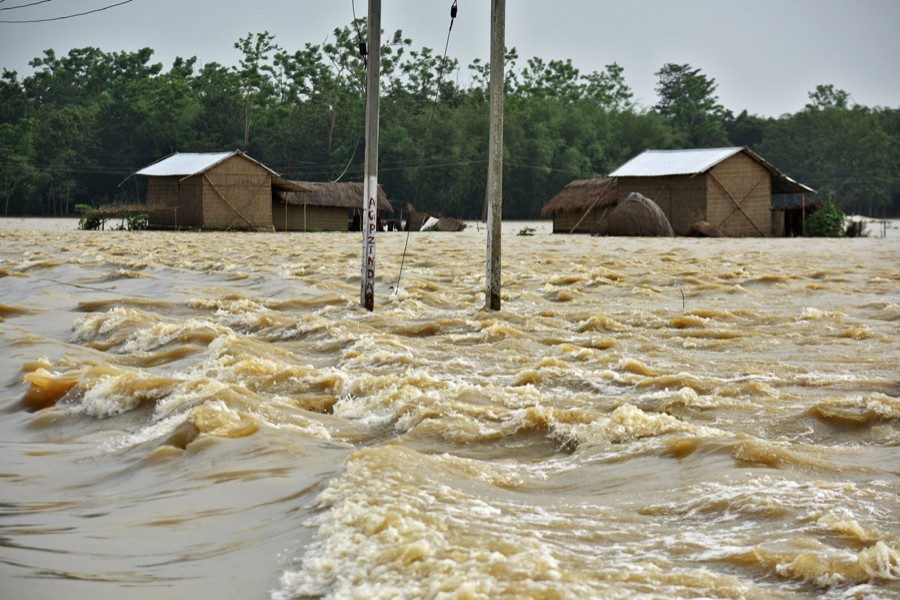
Published :
Updated :

The signs are rather strong that the floods that have engulfed some parts of at least 10 districts of the country could turn both nasty and devastating. A number of rivers now are in full spate following heavy downpour across the border and inland and they have inundated a vast area in these districts. A number of major rivers, including the Teesta, the Brahmaputra, the Surma and the Kushiyara, are now flowing above the danger mark. The flood situation, according to the Flood Forecasting and Warning Centre, is likely to deteriorate in some districts in the next couple of days. In addition to causing human sufferings, the onrushing floods would obviously exact an economic cost. However, all would depend on the severity of this natural calamity.
Bangladesh is geographically located in a vulnerable position as far as the monsoon floods are concerned. It rather helplessly bears the brunt of overflowing common rivers in the upstream. The dams constructed upstream to divert the dry season flow of these rivers are kept open during the monsoon. The people and the administration here have learnt to live with floods that are recurrent in nature. The rural people are found to be unusually resilient to natural calamities such as floods. They have proved it time and again, particularly during the devastating floods of 1966, 1987, 1988 and 1998. Country's ability to handle natural disasters such as cyclones and floods is also acclaimed internationally.
Thousands of people, particularly those living in low-lying areas, are already marooned. They are in desperate need of food and shelter. The Disaster management and Relief Ministry has said it is alive to the problems being faced by the people in the flood-affected areas. The state minister concerned has informed the media on Friday last about the relief measures undertaken by the government in flood-hit districts. However, there is always a gap between what is planned centrally and delivered ultimately at the field level. Since there is fear that the floods might engulf more areas, the government should draw up plans immediately to handle the situation efficiently and reduce the sufferings of the flood-hit people.
Indications are galore that both severity and incidence of natural calamities like floods, cyclones and droughts will increase in the coming years. The basic reason---climate change--behind all these is known to all. Whether all the international efforts to contain global warming would be able to reverse the process of environmental degradation remains in doubt. For the damage caused to environment until now being extensive is thought to be almost beyond repair. In such a situation, Bangladesh stands to face a two-pronged attack: The rising sea-level risks permanently inundating a part of its coastal area, on the one hand, and the remaining part would be visited by floods frequently, on the other.
The rural people hit by floods have developed an uncanny ability to start life anew and make efforts to recoup their losses within the shortest possible time. They have proven it time and again, particularly following the century's worst flood in 1988. However, they suffer badly when they remain marooned. Food, drinking water, emergency healthcare become scarce at that time. The government does need to focus on meeting such needs while doing all the exercises relating to post-flood rehabilitation. Another issue deserving government's immediate attention is the effect of the ongoing floods on price situation. The prices of some essential agricultural items have already skyrocketed because of supply crunch. The hike needs to be contained.


 For all latest news, follow The Financial Express Google News channel.
For all latest news, follow The Financial Express Google News channel.